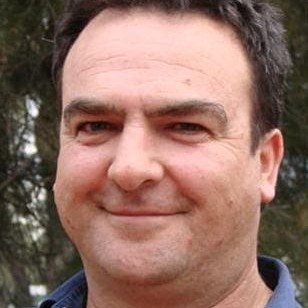 The Australian Beef Association has released its own model for red meat industry restructure – including a new cattle producer board – in response to the Cattle Council of Australia’s white paper on structural and representation issues.
The Australian Beef Association has released its own model for red meat industry restructure – including a new cattle producer board – in response to the Cattle Council of Australia’s white paper on structural and representation issues.
A number of interpretations and suggestions for restructure are now coming forward from different interest groups for stakeholders to absorb and comment on. In yesterday’s Beef Central article, “Ludwig eyes-off industry restructure plans,” further detail to the model preferred by Australian Meat Producers Group.
ABA chairman Brad Bellinger said the ABA board had set out to put forward a democratic structure giving all levy payers more access to a new cattle producers’ board, and therefore a greater say in the decision-making process.
Under the current structure, CCA was controlled by State Farming Organisations with no recognition of the ordinary producers even though they provided $500,000 in funding last year to CCA through the levy reserve dividend, Mr Bellinger said.
“The MLA has proven impervious to reform,” he said.
“While 40 entities now control 50 percent of the vote, more importantly just two multi-national processors will be able to control 20pc of the vote,” he said.
Beef Central assumes that Mr Bellinger is referring to JBS Australia, and the Teys-Cargill joint venture, 50pc owned by Cargill US. In 2008, JBS (then Swift Australia, and including separate levies paid by Rockdale Beef) held 897,259 MLA voting entitlements, while combined Cargill/Teys accounted for 268,000 entitlements.
Neither organisation represented the non-aligned ordinary cattle producer that provided most of MLA’s funding, Mr Bellinger said.
Structure and funding
Under ABA’s model, a new cattle producer board would have 10 to 11 directors drawn from each cattle producing area of Australia. All states would have a representative with an additional board member for each block of three million cattle, above the initial three million head base.
For example, Tasmania would have one board member with its herd of 400,000 head, while Queensland would have four board members, with close to 12 million cattle.
Grassfed levy payers would only be allowed to vote for, or nominate board members who resided in their area.
The funding for a new cattle representative organisation would be through the Grassfed Levy.
Under current arrangements, the grassfed levy is transferred from the levies collection unit to MLA. Under ABA’s proposed model, the grassfed levy of $53 million would be administered by the new board. MLA would be able to tender for projects in their capacity as a true ‘service delivery’ company.
“This new funding arrangement would be consistent with the processors’ arrangements where processor funds are administered by AMIC and the Australian Meat Processor Corporation where levies paid by processors are administered by their own representative body,” Mr Bellinger said.
Voting and Elections
One of the most important aspects of ABA’s new plan was ensuring that the democratic process was upheld, the organisation said. It put forward a number of possible scenarios for voting entitlements:
- A simple one-vote per levy payer
- A two-tiered voting system with a combination of one vote per levy payer, and a separate register with votes calculated on amount of levies paid. Motions put forward at an AGM would need the support of both voting registers to be passed.
To facilitate accuracy in the voting register, ABA also plans to renew its push for automatic voting rights.
“If woolgrowers get their automatic votes then why shouldn’t cattle producers?” Mr Bellinger argued.
“ABA believes that the Australian cattle producers need a one-stop-shop that is completely transparent and can both lobby on the political front and administer marketing for the direct benefit of those who fund it. We look forward to receiving feedback from cattle producers to a new beef industry structure that we are now putting up for public debate,” he said.
